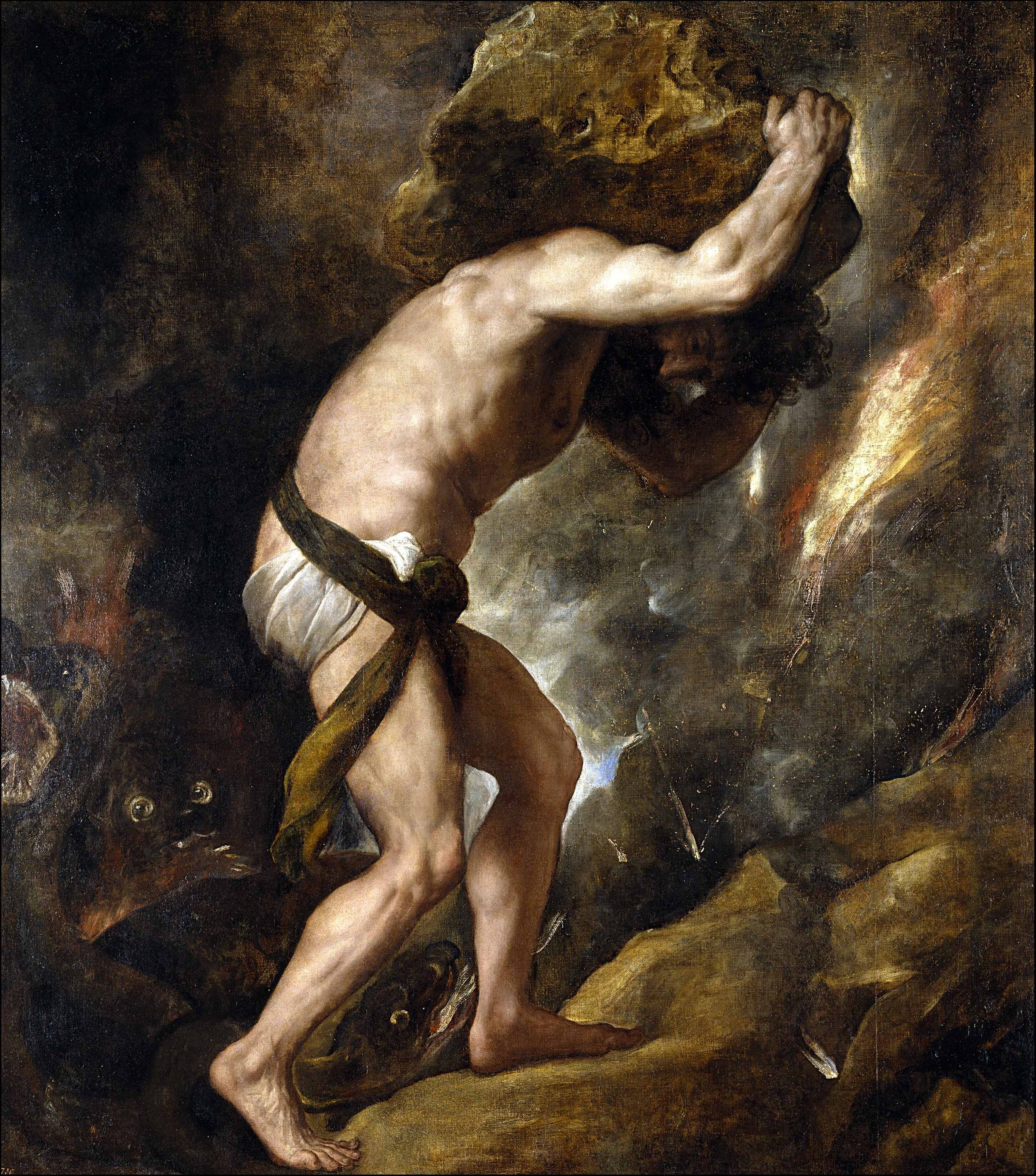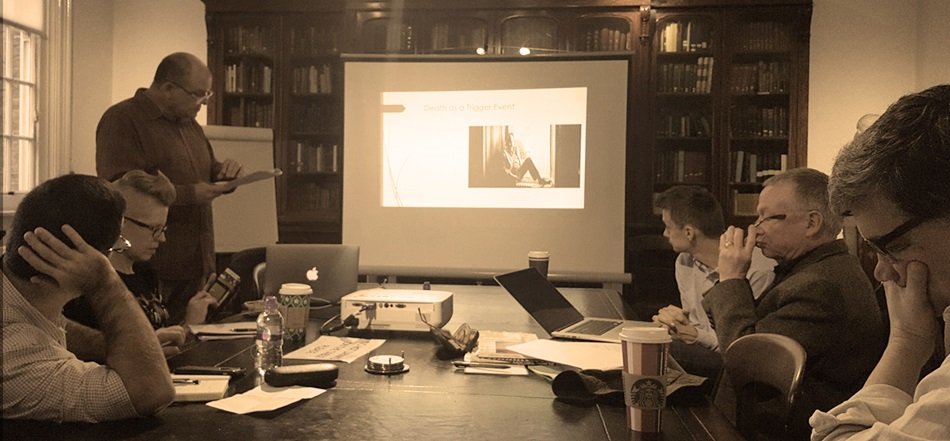
Conference 2021
Location: Virtual
Date: 19th November 2021
Programme
Panel #1: Camus and Philosophy
8.00-8.30: Simon Lea: ‘Myth, Meaning and Significance in Camus and Nietzsche’
8.30-9.00: George Heffernan: ‘Why Did Meursault Kill the Arab? A Study in the Absurdity of Moral Motivation’
9.00-9.30: Thom Hamer: ‘The Formal Structure of Existential Absurdity’
9.30-10.00: Discussion#1
10.00-10.15: Break
Panel #2: Camus and Literature
10.15-10.45: Gina Breen: ‘French-Algerian Exile’
10.45-11.15: Peter Francev: ‘The Myth of Sisyphus, the Absurd and the Question of Empathy’
11.15-11.45: Stephen Sullivan: ‘A Camusian Interpretation Of Ta-Nehisi Coates’
11.45-12.15: Discussion #2
12.15-13.00: Lunch Break
Panel #3
13.00-14.00: Plenary Talk: Eric Berg: ‘Lessons Learned and Ignored from Camus’s The Plague: COVID-19 in the American Context’
14.00-14.45: Response: Simon Lea
14.45-15.00: Closing Remarks

Abstracts
Eric Berg: ‘Lessons Learned and Ignored from Camus’s The Plague: COVID-19 in the American Context’
46.6 million cases of COVID-19 and an astonishing 754,132 citizens of the United States lives lost as of the due date for this abstract. COVID-19 took hold of the country in late 2019 and its death grip on the nation continues to raise the figures listed above. When read today, Camus’s remarkable novel The Plague of 1947 sets in sharp relief the French population of Oran’s reaction to plague and the reaction of the American population to COVID-19. The infection and death rate in the United States is largely a function of behavior as it was in Oran. From the resistance to wearing masks to embracing ivermectina as a cure what did the American population do differently than the French colonists? In this paper, I will look for answers in four characters in Camus’s The Plague and situate them in the American landscape during COVID-19. The characters of interest are: Father Paneloux in relation to American Christian response to COVID, particularly the Baptist Church and the Evangelical Lutheran Church in America; Dr. Rieux and the American medical community paying special attention to the CDC; Cottard as the American radical right; and Rambert and the American press with attention given to the idea of “fake news” and social media.
Gina Breen: ‘French-Algerian Exile’
Albert Camus’s L’Exil et le Royaume was Camus’s last official literary publication before his death in 1960. It is a collection of six short stories, published in 1957, seven months before he received the Nobel Prize in Literature. In his acceptance speech, which was misreported, Camus specifically addressed justice and the Algerian situation, by discussing the role of the writer and the importance of truth, communicating his belief that the writer has a social duty as they bear witness to history.
In this paper, I will discuss three of the six short stories, namely “La Femme Adultère,” “Les Muets” and “L’Hôte” which are all set in Algeria. Written at the beginning of the armed struggle, the stories were published three years into the Algerian War. I argue that these stories demonstrate the moral dilemmas of the colonial situation, and they are vital to our understanding of Camus’s mythopoetics and the evolution of the pied-noir myth Camus first presents in L’étranger fifteen years earlier. Like Meursault, the characters in these stories suffer from estrangement. As the title suggests, Camus’s identity crisis still exists as he depicts the poverty, self-exile, exclusion, and solitude inherent in these dystopic Algerian spaces. None of the stories end with resolutions and the characters’ neutrality makes them victims of French colonialism. The stories and protagonists also mirror many of Camus’s personal confrontations because they hesitate about the future. They imply a certain degree of hopefulness, but their true feelings remain hidden.
Peter Francev: ‘The Myth of Sisyphus, the Absurd and the Question of Empathy’
Whilst there is no mention of the empathy or ethics of Edith Stein in the fiction and non-fiction of Albert Camus, one can easily surmise that Camus, being a part of the Parisian café scene during the years leading up to, including and beyond the second world war, would have encountered some discussions of Stein’s thought through Jean-Paul Sartre, Simone de Beauvoir or Maurice Merleau-Ponty, prior to his falling out with both men. It is then the purpose of this paper to set out and accomplish several things: firstly, I would like to provide a very brief introduction to the empathy of Stein; secondly, I should like to offer readers a concise summary of Stein’s principle text on empathy (On the Problem of Empathy, Stein, 1964); finally, I would like to offer an exposition and an analysis of Stein’s concept of empathy, from a phenomenological perspective, whilst keeping in mind Camus’s philosophy of the absurd as posited in The Myth of Sisyphus.
Thom Hamer: ‘The Formal Structure of Existential Absurdity’
What exactly do different notions of existential absurdity have in common? This essay attempts to put forward a unifying account of the formal structure of existential absurdity. In so doing, it sheds light not on the particular facts that render the human condition absurd, such as mortality, insatiability or contingency, but on what it means to say that life is absurd in the first place, regardless of that factual content. In order to establish such a formalization, I draw on particular notions of the Absurd, such as that of Albert Camus, Jean-Paul Sartre, Søren Kierkegaard and Thomas Nagel. Deducing a variety of common denominators from those absurdities, I conclude that existential absurdity is defined by an inescapable incongruity between an anticipation and an actual state of affairs. This turns out to be more than a mere formalization of existential absurdity, as it provides a criteriological framework for evaluating both the validity of particular notions of existential absurdity and the authenticity of responses to that absurdity.
George Heffernan: ‘Why Did Meursault Kill the Arab? A Study in the Absurdity of Moral Motivation’
In Camus’s novel, The Stranger, Meursault shoots and kills an Arab at an encounter by the sea. At his interrogation, the examining magistrate repeatedly asks Meursault why he first fired one shot at the Arab, then paused for a short time, and finally fired the second, third, fourth, and fifth shots at the motionless body lying on the beach. Meursault has no answer to the magistrate’s question. Indeed, he thinks that the magistrate is wrong to focus on it because it really does not matter. Yet Meursault learns at his trial that his pause is crucial because it makes all the difference between a legal case of self-defense and one of premeditated murder, as well as has profound moral implications and consequences. In this paper, I examine several plausible answers to the question concerning why Meursault not only shot but also killed the Arab, and I explore the roles of rationality and absurdity in Meursault’s moral motivation.
Simon Lea: ‘Myth, Meaning and Significance in Camus and Nietzsche’
For Camus, Nietzsche was a lifelong inspiration and interlocutor. Indeed, The Myth of Sisyphus can be profitably read as a response to questions posed by Nietzsche several decades earlier about myth, meaning and significance. Camus's and Nietzsche's attitudes towards meaning and significance are best understood by exploring their attitudes to myth. In this presentation, I focus on their attitudes towards political myth, a way of thinking about the world and our place within it that seeks to give significance to our actions and beliefs. My aim is to show that Camus's and Nietzsche's frequent references to a human yearning for ‘meaning’ is best understood as a yearning for ‘significance’.
Thinking about meaning in terms of the more nuanced sense of significance makes clearer some of the more puzzling aspects of Camus's claims about meaning in The Myth of Sisyphus and Nietzsche's in The Genealogy of Morals, namely Camus's claim that life is lived all the better if it has no meaning and Nietzsche's claim that any meaning is better than no meaning at all. That being said, arguably, Camus's most important essay, The Myth of Sisyphus, references ‘myth’ in the title and climaxes with a version of the Sisyphus myth is under-explored in Camus studies. My focus on myth aims, with due modesty, to refocus the direction of our attention towards myth, and in particular, political myth. Attending to the nuance between meaning and significance is, in hope, a step in the right direction.
Stephen J. Sullivan: ‘A Camusian Interpretation Of Ta-Nehisi Coates’
To the best of my knowledge, Ta-Nehisi Coates in his writings only ever mentions Albert Camus once: he notes about a Paris trip, “I had not [yet?] read Sartre or Camus” (Between the World and Me [New York: Spiegel & Grass, 2015], p. 122). But it seems to me that there are some striking parallels between Camus’ atheistic existentialism and Coates’ personal philosophy that include but go beyond their shared atheism. That at any rate is the case I want to make in this presentation. I will argue that Camus’ ideas of cosmic injustice, revolt, lucidity, solidarity, and meaningful life have their counterparts in Coates’s writings, mainly Between the World and Me but also We Were Eight Years in Power (New York: One World, 2017) and even his more recent novel The Water Dancer (New York: One World, 2019), among other writings To give three examples: Camus’ conviction that injustice is part of the absurdity of the world parallels Coates’s belief in the reality of global injustice and his rejection of Martin Luther King, Jr.’s providentialist faith that the arc of the universe curves toward justice. Camus’ commitment to revolt against injustice parallels Coates’s to struggle against racial oppression. And Camus’ emphasis on lucidity and integrity parallels Coates’ to what he often calls consciousness. To be sure, Coates’ work hardly needs validation by Camus (nor Camus’ work by Coates). But I find it fascinating that two important thinkers from such different backgrounds and nations should have so much in common.